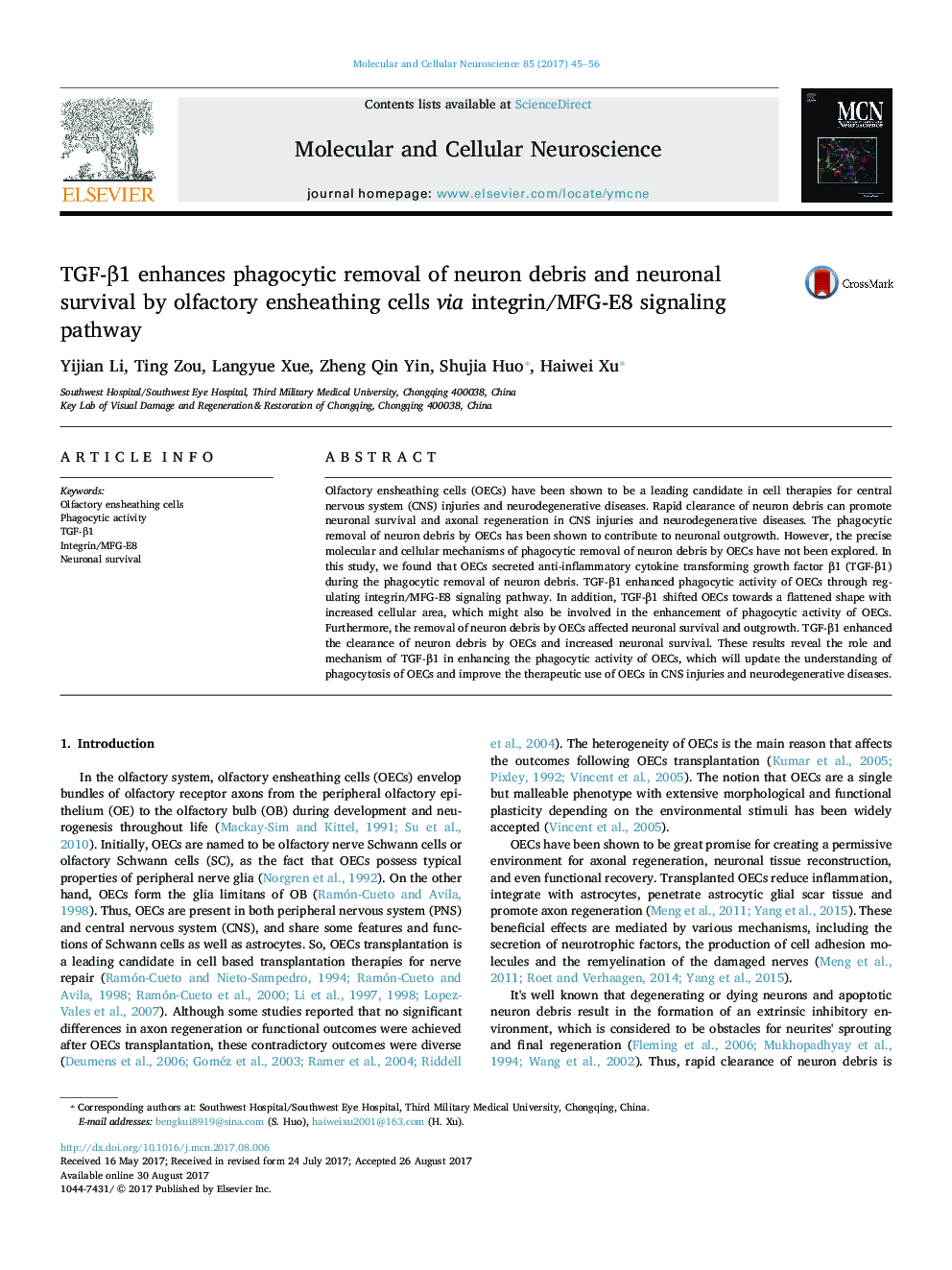| Article ID | Journal | Published Year | Pages | File Type |
|---|---|---|---|---|
| 5534416 | Molecular and Cellular Neuroscience | 2017 | 12 Pages |
â¢OECs secreted TGF-β1 during the phagocytic removal of neuron debris.â¢TGF-β1 enhanced phagocytic activity of OECs through regulating integrin/MFG-E8 pathway.â¢TGF-β1 enhanced the clearance of neuron debris by OECs and increased neuronal survival.â¢TGF-β1 shifted OECs towards a flattened shape.
Olfactory ensheathing cells (OECs) have been shown to be a leading candidate in cell therapies for central nervous system (CNS) injuries and neurodegenerative diseases. Rapid clearance of neuron debris can promote neuronal survival and axonal regeneration in CNS injuries and neurodegenerative diseases. The phagocytic removal of neuron debris by OECs has been shown to contribute to neuronal outgrowth. However, the precise molecular and cellular mechanisms of phagocytic removal of neuron debris by OECs have not been explored. In this study, we found that OECs secreted anti-inflammatory cytokine transforming growth factor β1 (TGF-β1) during the phagocytic removal of neuron debris. TGF-β1 enhanced phagocytic activity of OECs through regulating integrin/MFG-E8 signaling pathway. In addition, TGF-β1 shifted OECs towards a flattened shape with increased cellular area, which might also be involved in the enhancement of phagocytic activity of OECs. Furthermore, the removal of neuron debris by OECs affected neuronal survival and outgrowth. TGF-β1 enhanced the clearance of neuron debris by OECs and increased neuronal survival. These results reveal the role and mechanism of TGF-β1 in enhancing the phagocytic activity of OECs, which will update the understanding of phagocytosis of OECs and improve the therapeutic use of OECs in CNS injuries and neurodegenerative diseases.
